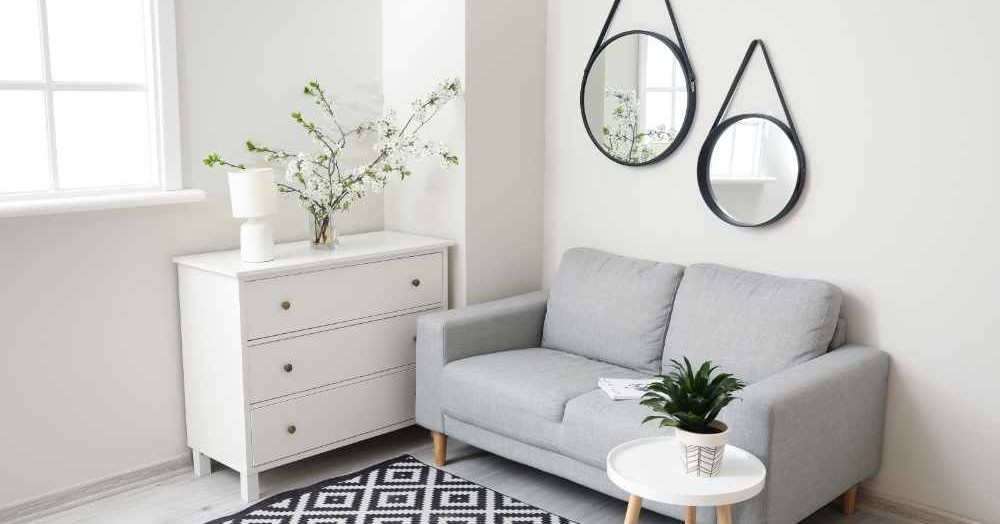
Furnishing a buy-to-let: everything you need to know!
When you buy to let, there are many things that you need to consider. However, with thought and planning, the process can be seamless, hassle-free and a wise investment for the future – particularly in prime areas where rental demand will always remain high.
Knowing how to furnish your property is perhaps one of the biggest considerations, with practicalities to bear in mind, as well as an awareness of how your interior will affect the type of tenants you’ll attract, and the kind of contracts they will be looking for.
First things first, why furnish your buy-to-let?
As a landlord you are under no legal obligation to furnish your property and there is no right or wrong answer to whether you should leave the walls bare or create a turnkey property (one that is ready for immediate use). However, what you’re willing to offer will have a direct impact on who will be willing to rent your property. While some tenants may want to provide their own furniture, providing accommodation that is immediately ready for use holds wide appeal for a number of renters.
Here are some of the benefits of furnishing your buy-to-let:
Dependent on location, asset type and rental demand, furnishing your property to a good standard will inevitably attract those who want hassle-free renting, including mobile professionals, corporate tenants, tenants from overseas, international students and tenants looking for short-term lets.
Because of the range of tenants you will attract, you may be able to rent your property faster. You may also be able to increase the rental price, depending on the quality of your facilities and furnishings.
What furniture and furnishings should you include in a buy-to-let?
When it comes to starting out, it’s worth sorting the must-haves from the optional. For standard rentals, kitchen appliances such as fridge-freezers, cookers, dishwashers and washing machines, all fall into the ‘must-have’ category.
It’s also worth bearing in mind any furnishings that may be considered a little more complex to fit – such as curtain tracks, rails, and blinds. By making sure these are fitted yourself, you can ensure that the work is done to an appropriate standard and save yourself the worry of your tenants trying their own hand at tricky DIY. Bathroom fittings such as mirrors and towel rails are also small but important details to remember.
Other furniture to think about:
· Beds and bedroom furniture such as wardrobes, chests of drawers and bedside tables.
· Lighting and lamps.
· Dining table and chairs.
· Sofas, chairs and soft furnishings such as rugs and carpets, depending on what flooring you have.
There is no legal definition as to what constitutes a ‘furnished’ property. The items mentioned above constitute the basics, but for high-end, luxury rentals, crockery, cutlery, towels and bedding and top-end furniture may also be expected.
Choosing an interior style that works for everyone
Choosing an interior theme or colour scheme for your rental is important to get right. Forget personal taste – because when it comes to decorating your buy-to-let, clean, bright and neutral is the way forward.
Here are a few top tips:
· Avoid trends when it comes to decorating – a quirky, intricate pattern wallpaper for a feature wall may seem like a good idea, but it could put off potential tenants with different tastes.
· Remember that light, bright colours make rooms seem bigger and more spacious.
· Think about quality and durability, particularly when it comes to fittings and fabrics. Don’t choose light fabrics that are hard to clean or easy to stain, it may be the way forward when it comes to wall colour, but white sofa covers aren’t quite so practical.
· How you choose to decorate your property will depend partly on which market you are aiming for, but remember to give your tenants some room to make the property feel homely and like their own – when it comes to small details and aesthetics, allow them to feel as though they have a good quality, comfortable blank canvas.
· If your property is in an urban location, then it’s vital not to neglect any outdoor space if you’re lucky enough to have it. Ensure that any outdoor areas are clean, tidy and usable.
Legal obligations for landlords
Furniture must conform to the legal fire-resistant standard - all fabric furniture such as sofas and armchairs must have labels proving that they meet this standard.
Finally, insure the contents of your rental property
It is sensible to get the contents of your rental property insured. A letting agent will be able to make a detailed list (inventory) of everything in the property before the tenancy starts.
When the tenancy ends, the agent will return to check that everything is still there and make a note of any damage or wear and tear.